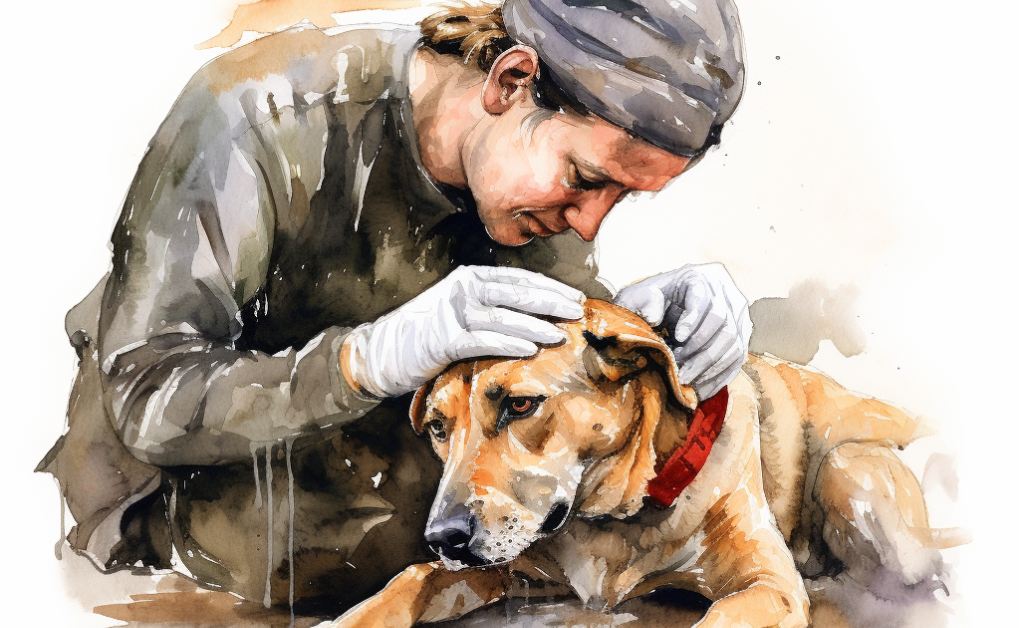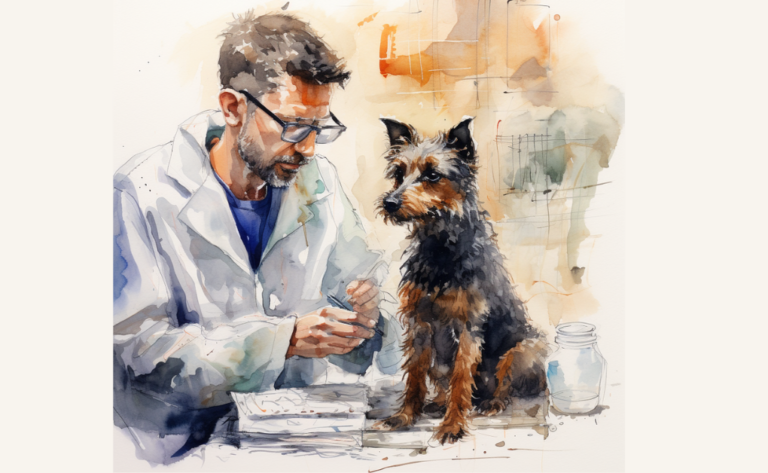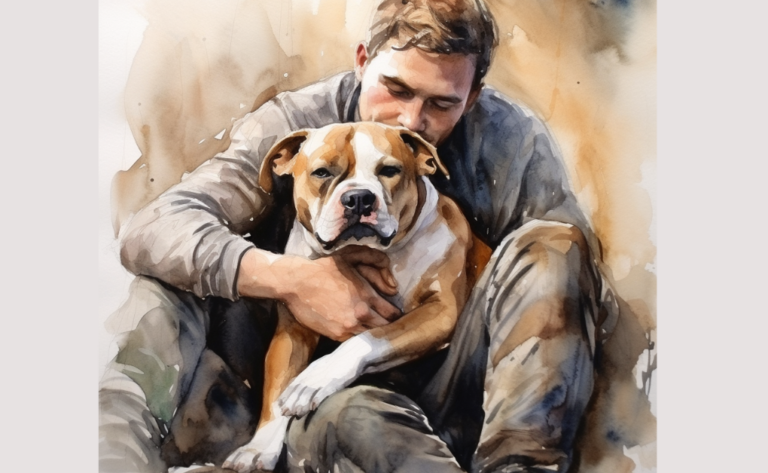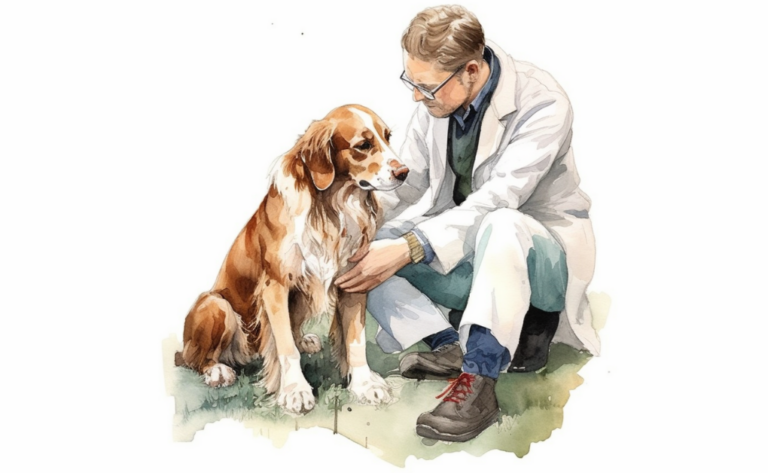Common Emergencies in Dogs: Causes, Symptoms, Treatment
What is it?
How is it Treated?
Breed Predispositions
All sizes, ages, and breeds of dogs can be affected
Introduction
It was a sunny Sunday afternoon when Sarah decided to take Max, her energetic Golden Retriever, to the nearby dog park for some much-needed exercise. As Max enthusiastically played fetch with his favorite ball, Sarah couldn’t help but smile at her furry companion’s sheer joy. However, her happiness quickly turned to panic when Max suddenly collapsed, struggling to catch his breath. In that heart-stopping moment, Sarah’s instincts kicked in, and she knew she needed help. Rushing Max to the nearest veterinary hospital, she wondered how this could have happened to her healthy, playful pup.
A typical pet emergency in dogs is any situation that requires immediate veterinary intervention. This can be due to illness, direct injury, or poisoning. Some of the most prevalent causes of dog emergencies encompass heatstroke, hypoglycemia, seizures, and broken bones.
In addition, dogs can fall ill from various sources, such as food allergies, parasites, infections, toxins, and poisons. These conditions may result in severe health complications if left untreated. In situations requiring critical care, seeking assistance from a small animal veterinarian is crucial to address the issue promptly and ensure your dog’s well-being.
What are Some of the Common Emergencies in Dogs?
Several types of emergencies can occur in dogs, requiring immediate attention and care. Some of the most common dog emergencies include:
- Trauma: This includes injuries from car accidents, falls, animal attacks, or other accidents that result in fractures, dislocations, deep cuts, or puncture wounds.
- Poisoning: Exposure to toxic substances such as chemicals, poisonous plants, household cleaners, medications, or certain foods can lead to dog poisoning.
- Bloat (GDV): Gastric Dilatation Volvulus, or bloat, is a life-threatening condition where the dog’s stomach fills with gas and twists on itself, cutting off blood supply and causing shock.
- Heatstroke: Overheating in hot weather or from excessive physical activity can lead to heatstroke, which can be life-threatening if not treated promptly.
- Seizures: Seizures can be caused by various underlying conditions, including epilepsy, brain tumors, or poisoning. Repeated or prolonged seizures are an emergency that requires immediate veterinary care.
- Choking: A foreign object lodged in the dog’s throat can obstruct the airway and lead to choking, which is life-threatening.
- Difficulty breathing: Respiratory distress can result from allergic reactions, heart failure, lung diseases, or injuries and requires urgent medical attention.
- Allergic reactions: Severe allergic reactions to insect bites, medications, or certain foods can cause swelling, difficulty breathing, and even shock.
- Obstetric emergencies: Complications during pregnancy, labor, or delivery, such as dystocia (difficult birth), can be life-threatening for both the mother and the puppies.
- Eye injuries: Trauma or infections affecting the eyes can lead to vision loss or other complications if not treated immediately.
- Urinary obstruction: A blockage in the urinary tract can cause extreme pain and life-threatening complications if not addressed promptly.
- Internal bleeding: Internal bleeding can result from trauma, ingestion of blood-thinning medications, or clotting disorders and requires immediate attention.
- Vomiting or Diarrhea: If your pet is severely vomiting or having diarrhea, it may be a sign of a serious underlying condition. In some cases, they may need veterinary attention immediately. These conditions can lead to dehydration, weakness, and loss of appetite in animals.
These are just a few examples of the different types of emergencies that can occur in dogs. It is essential to be aware of the signs and symptoms of these emergencies and seek immediate veterinary care if you suspect your dog is experiencing a medical emergency.
Symptoms of Medical Emergencies in Dogs
Symptoms of common emergencies in dogs vary depending on the type of emergency, and they may not appear until several hours later. However, immediate attention is crucial if you notice any signs: continuous vomiting, diarrhea, tremors, seizures, collapse, muscle twitching, salivation, drooling, excessive urination, weakness, lack of coordination, difficulty breathing, convulsions, coma, and death.
- Gastrointestinal emergencies, such as attempts at vomiting, diarrhea, constipation, stomach pain, and bloating, may indicate that your pet may be experiencing various issues. For example, vomiting could be a sign of an allergic reaction or consumption of something toxic, while diarrhea may result from overeating or excessive water intake. Constipation often occurs due to insufficient exercise, and stomach pain might suggest poisoning. Finally, bloating can indicate gas buildup in the digestive tract.
- Skin emergencies include burns, cuts, scrapes, rashes, sores, and infections. Burns can occur when your dog is exposed to extreme heat, while scrapes and cuts may result from contact with sharp objects like glass, knives, or nails. Rashes appear as red spots on your dog’s skin, and sores are painful areas of infection caused by bacteria, viruses, parasites, or fungi.
- Neurological emergencies, such as seizures, head injuries, blindness, paralysis, and coma, can be particularly severe. Seizures are sudden episodes of abnormal behavior, and head injuries may cause internal bleeding in the brain. Blindness can occur if your dog loses sight in one eye, and paralysis may result from an inability to move muscles. A coma is a state where your dog stops moving and reacting normally.
As a pet parent, be vigilant for common signs like swelling around the face, which could indicate an allergic reaction or bite wound. Dogs that are having difficulty breathing should be closely monitored. If your dog experiences a seizure that lasts more than five minutes, it may need veterinary attention to stop the episode.
In any of these situations, it is crucial to seek veterinary care promptly to ensure the best possible outcome for your pet.

Diagnosis of Common Emergencies in Dogs
When a veterinary emergency involving a dog arises, the vet will initially gather detailed information about the dog’s medical history. This step helps determine if pre-existing conditions could worsen the current problem. The vet may take X-rays to identify any underlying trauma causing pain if necessary. They might also perform general blood tests and specialized laboratory testing as needed, offering further insight into the issue affecting your pup.
After collecting sufficient diagnostic data on your canine companion, the vet will conduct an examination and assess the root cause of the emergency. Based on their findings, they may order additional tests or initiate specific treatments to help your dog recover quickly.
Pet owners should contact their vet immediately if they notice any signs that their dog suddenly needs critical care or if they suspect their dog has a broken bone or has ingested a foreign object. Small animal emergency and essential care services are available at animal hospitals and specialist care centers, where vets can access advanced diagnostic tools such as ultrasounds and CT scans. These tools enable more accurate diagnoses of complex medical conditions than relying solely on conventional methods like X-rays.
Veterinary professionals can consult resources like animal poison control for cases involving the ingestion of toxic substances. If a male cat is part of your household, it’s essential to have them checked by a vet as well, as some conditions, if left untreated, can lead to complications.
With the appropriate diagnostic tools and expertise, vets can determine the specific issue affecting your four-legged friend and develop an individualized treatment plan tailored to their needs.
Treatment for Medical Emergencies in Dogs
When it comes to common emergencies in dogs, rapid and effective treatment is crucial. Depending on the emergency, treatments can range from simple home remedies to more extensive medical interventions.
For minor issues, veterinarians may prescribe medications or treatment plans to help alleviate the symptoms. However, more severe emergencies, such as choking or heatstroke, require emergency care immediately. In these cases, your veterinarian might need to administer fluids, oxygen therapy, surgery, or other interventions.

Here are some possible treatments for everyday emergencies in dogs:
- Heatstroke: Treatment involves quickly cooling the dog with cold packs or a cool bath before seeking emergency veterinary care.
- Gastric Dilatation-Volvulus Syndrome (GDV): Immediate veterinary treatment is essential to save the dog’s life, as GDV requires emergency surgery for correction.
- Poisoning: Often caused by ingestion of human food (e.g., chocolate), specific toxins, medications, or plants – treatment for poisoning depends on the source and severity but often requires decontamination of toxic ingredients from a dog’s stomach and blood vessels through IV fluids or activated charcoal administration, which might require hospitalization for 1-2 days. Other symptoms require more specific treatments depending on what was ingested.
- Allergic Reactions: Allergic reactions can result from insect bites or stings, contact with irritants, certain foods, and medications – immediate actions involve removing the cause of the allergy, followed by regular antihistamines administration, then seeking professional veterinary advice if necessary.
- Foreign Body Ingestion: Signs typically develop if an animal swallows something they shouldn’t – including sudden vomiting or retching accompanied by unproductive attempts to cough up something stuck in their throat or digestive tract. Treatment involves removing the foreign body surgically or endoscopically, sometimes only performed at a referral facility, where surgeries are done under anesthesia, which requires pre-anesthetic blood tests and advanced imaging technologies such as radiographs, ultrasounds, CT scans, or MRI scans.
It’s essential to have an emergency kit containing vital supplies like bandages and antiseptics for wounds or cuts, anti-nausea medication for upset stomachs, and a rectal thermometer to take temperature readings. Additionally, you should readily have contact information for emergency services (such as 24-hour vet hospitals).
In case of direct pressure on the chest or abdomen, which can occur without warning, seek emergency treatment from a veterinary medical professional. Immediate veterinary treatment is necessary to prevent permanent damage or complications.
How to Prevent Emergencies in Dogs?
Preventing common dog emergencies is just as crucial as treating them when they occur. The sooner you address these problems, the better off your dog will be. Here are some tips to help prevent common dog emergencies:
- Keep your dog away from water sources. Dogs should never drink from puddles or streams because they may ingest harmful bacteria or parasites. Instead, let your dog drink only from clean, fresh water bowls.
- Ensure your dog’s food and water bowls are cleaned regularly. Dirty bowls can harbor germs that cause diarrhea and vomiting.
- Don’t leave your dog alone near trash cans or garbage bags. Your dog may eat items he shouldn’t, including plastic wrappers, paper towels, and cigarette butts.
- Never feed your dog table scraps. They contain chemicals and preservatives that can harm your pet.
- Be careful not to overfeed your dog. Overfeeding can lead to obesity, diabetes, and heart disease.
- Check your dog’s paws often for signs of infection. Clean any wounds with soap and warm water.
- Teach your dog to use his crate correctly. Crate training helps reduce stress and anxiety.
- Use a leash whenever possible. Leashes keep your dog safe and protect him from getting lost.
- Always supervise your dog outside. Letting your dog roam free outdoors increases the risk of injury and illness.
- Take your dog to the vet at least once per year for veterinary services. This allows your veterinarian to monitor your dog’s health and catch any illnesses early.
- Give your dog plenty of exercise. Exercise keeps your dog healthy and happy. Play fetch with your dog every day. Walk your dog daily.
In case of an emergency, it’s essential to seek urgent care by taking your dog to a veterinary hospital. Prompt attention can significantly affect your dog’s well-being and recovery.
Frequently Asked Questions
Disclaimer: The information provided on this veterinary website is intended for general educational purposes only and should not be considered as a substitute for professional veterinary advice, diagnosis, or treatment. Always consult a licensed veterinarian for any concerns or questions regarding the health and well-being of your pet. This website does not claim to cover every possible situation or provide exhaustive knowledge on the subjects presented. The owners and contributors of this website are not responsible for any harm or loss that may result from the use or misuse of the information provided herein.







